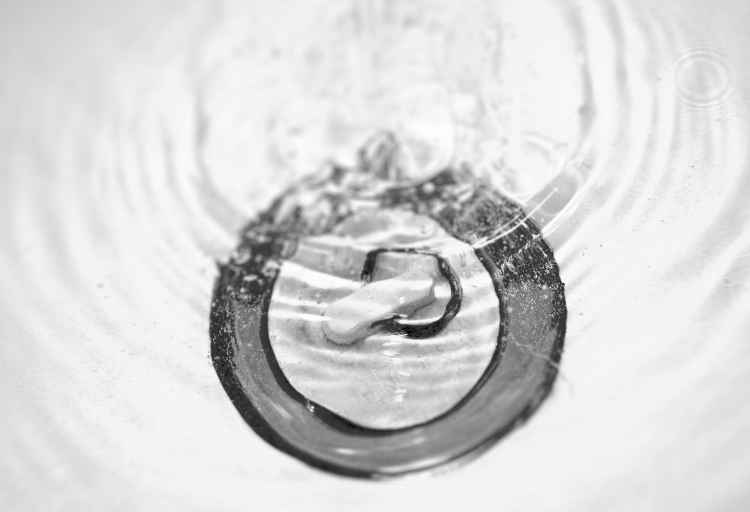Why Is My Bathroom Sink Filling Up with Water?
Is your bathroom sink mysteriously filling up with water? Don’t worry, you’re not alone. Many homeowners have experienced this frustrating issue at some point. Understanding why it’s happening and how to fix it can help you avoid a messy situation.
In this guide, I’ll explore the common culprits behind a clogged bathroom sink and provide you with easy troubleshooting tips to get the water flowing freely again. From hair and soap scum buildup to a blocked drain pipe, we’ll walk you through each possible cause and offer practical solutions.
So, whether you’re dealing with a slow-draining sink or a complete water backup, this article will equip you with the knowledge and tools to tackle the problem head-on. Say goodbye to standing water and hello to a smoothly functioning bathroom sink!

Contents
- Why Is My Bathroom Sink Filling Up with Water?
- How to Troubleshoot a Clogged Drain?
- How to Fix a Faulty Pop-up Drain Assembly?
- Checking for a Blocked Vent Pipe
- Understanding the Role of the P-trap and How to Clean It
- When to Call a Professional Plumber?
- Preventive Measures to Avoid Future Sink Issues
- Tools and Supplies Needed for Troubleshooting
- Conclusion
Why Is My Bathroom Sink Filling Up with Water?
A clogged bathroom sink can be caused by various factors, but the most common culprits are hair and soap scum buildup.
Over time, hair strands and soap residue can accumulate in the drainpipe, restricting the flow of water and eventually causing it to back up. Additionally, foreign objects such as toothpaste caps or jewelry can accidentally fall into the sink, further contributing to the blockage.
Another possible cause is a blocked vent pipe, which prevents proper air circulation and leads to water backing up in the sink.
Finally, a faulty pop-up drain assembly can also cause water to accumulate in the sink. Understanding these common causes is crucial for effective troubleshooting.
How to Troubleshoot a Clogged Drain?
Before diving into more complex solutions, it’s worth trying some simple methods to unclog your bathroom sink.
Start by using a plunger to create suction and dislodge any debris blocking the drain. Place the plunger over the drain opening, ensuring a tight seal, and pump it up and down vigorously.
If this doesn’t work, try using a drain snake or a straightened wire coat hanger to manually remove the clog. Insert the snake or wire into the drain and twist it gently to catch the debris.
Pull it out carefully, avoiding any damage to the pipes. If these methods fail, it’s time to explore other potential causes and solutions.
How to Fix a Faulty Pop-up Drain Assembly?
A faulty pop-up drain assembly can prevent your bathroom sink from draining properly. To fix this issue, start by removing the drain stopper.
Depending on the type of assembly, you might need to unscrew it or lift it out. Once the stopper is removed, inspect it for any signs of damage or blockage.
Clean it thoroughly using warm water and a brush, removing any hair or soap residue. If the stopper is in good condition, check the drain body for debris.
Use a flashlight to look inside and remove any visible obstructions. Reassemble the pop-up drain, ensuring a proper fit, and test the sink to see if the water drains freely.
Checking for a Blocked Vent Pipe
A blocked vent pipe can cause water to back up in your bathroom sink. The vent pipe allows air to enter the drain system, which helps water flow smoothly.
If this pipe becomes clogged, it can disrupt the balance of air pressure and lead to drainage problems. To check for a blocked vent pipe, locate the vent on your roof, usually above the bathroom.
Carefully climb up and inspect the vent opening for any obstructions, such as leaves or bird nests. Use a long-handled brush or a plumbing snake to remove the blockage if necessary. Once the vent pipe is clear, the water should drain properly from your sink.
Understanding the Role of the P-trap and How to Clean It
The P-trap is a curved pipe located beneath your bathroom sink that prevents sewer gases from entering your home. However, it can also trap debris and become a breeding ground for clogs.
To clean the P-trap, start by placing a bucket or towel beneath it to catch any water or debris. Use a wrench to loosen the slip nuts on both ends of the P-trap and carefully remove it. Empty the contents into the bucket and inspect the trap for any blockages.
If necessary, use a wire brush or a plumbing snake to remove the debris. Once the trap is clean, reassemble it and run water to check if the clog has been cleared.
When to Call a Professional Plumber?
While many bathroom sink clogs can be resolved with DIY methods, there are instances where it’s best to call a professional plumber.
If you’ve tried all the troubleshooting tips mentioned earlier and the issue persists, it may indicate a more severe problem within your plumbing system.
A plumber has the necessary tools and expertise to diagnose and resolve complex clogs, leaks, or pipe damage.
Additionally, if you’re uncomfortable or inexperienced with plumbing repairs, it’s wise to seek professional assistance to avoid causing further damage to your sink or pipes.
Preventive Measures to Avoid Future Sink Issues
Prevention is always better than cure when it comes to bathroom sink problems. By implementing a few simple habits, you can minimize the risk of clogs and keep your sink functioning smoothly.
First, use a drain catcher to catch hair and other debris before they enter the drain. Regularly clean the drain stopper and remove any accumulated hair or soap residue.
Avoid pouring grease, oil, or coffee grounds down the sink, as these can solidify and cause clogs. Lastly, consider periodically pouring boiling water down the drain to help dissolve any minor buildup.
Tools and Supplies Needed for Troubleshooting
When troubleshooting a clogged bathroom sink, it’s helpful to have a few tools and supplies on hand. A plunger is an essential tool for creating suction and dislodging clogs.
A drain snake or a wire coat hanger can be used to manually remove blockages from the drainpipe. A flashlight will come in handy for inspecting hard-to-reach areas, such as the drain body or the vent pipe.
Additionally, having a bucket or towel nearby will help contain any water or debris during the troubleshooting process. Having these tools readily available will make it easier for you to tackle sink issues as soon as they arise.
Conclusion
Dealing with a bathroom sink that fills up with water can be a frustrating experience. However, armed with the knowledge and troubleshooting tips provided in this article, you can tackle the problem effectively.
By understanding the common causes of a clogged sink, such as hair and soap scum buildup or a faulty pop-up drain assembly, you can take the necessary steps to fix the issue. Checking for a blocked vent pipe and cleaning the P-trap are additional troubleshooting methods that can help restore proper drainage.
If all else fails, don’t hesitate to call a professional plumber for assistance. Implementing preventive measures and having the right tools on hand will also contribute to maintaining a functional and clean bathroom sink.
With these tips and strategies, you can say goodbye to standing water and hello to a smoothly functioning sink for years to come.

